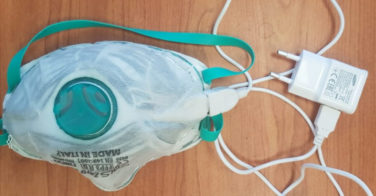Pharma marketing has evolved considerably over the past 30 years. Traditionally, pharma marketers shied away from the rare disease community, as the collective market was small and didn’t afford maximum brand exposure. However, with discoveries of a genetic target for myriad new, rare ailments in the past few decades, the collective orphan disease market is dramatically expanding.1
Orphan Drugs: A Growing Opportunity
The shift to the orphan-drug model can be attributed in large part to the Orphan Drug Act (ODA) of 1983, which contained financial incentives for pharmaceutical companies to develop new products to treat those in the rare disease community. Since ODA’s creation, the number of market-approved orphan drugs has increased to about 400, while the number of approved non-orphan drugs appears to have peaked.2
Beyond financial incentives, ODA established a new set of testing guidelines for orphan drugs that are particularly attractive to big pharma. Orphan drugs that have been filed for regulatory review or are in phase III trials provide a 1.7 times greater return on investment (ROI) than non-orphan drugs, due to the fact that orphan drugs require a lower median phase III trial size.1
Time Is Critical
Many of the patients with rare diseases have chronic, progressive, serious, life-limiting and life-threatening conditions with high unmet medical needs. Challenges to developing therapies exist as specific endpoints, outcome measures, tools, instruments and biomarkers are usually lacking. In addition, from a regulatory standpoint, there is often no precedent or “validated” or qualified endpoints, biomarkers or surrogates to learn from.
Even with these incredible hurdles, both industry and the FDA have responded with approximately one-third of NME approvals and two-thirds of biologics approvals in the past few years (2006-2010) being for orphan diseases. Additionally, 75% of orphan marketing applications are approved, with 20% for first-in-disease indications.3
With the development process in high gear, once a product is approved, urgency then falls on the marketers to communicate to the community the critical importance of screening, diagnosis and management of the rare disease.
Leveraging Technology In A Rare Disease Market
Pharmaceutical marketers are always looking to increase the speed at which they educate by leveraging newer technologies to reach doctors as close to the point of care as possible to spread the word about their orphan drugs. In addition to identifying the right candidates for these therapies, there is an ever-pressing need for more direct and targeted communication to ensure that pharma is “getting its foot in the door,” rather than getting the door shut in its face. Marketers are in dire need of message-delivery mechanisms that target the doctors when they are most receptive to listening—while not interfering with their delivery of care. In finding and using these platforms, marketers can help protect themselves against message fatigue while achieving maximum results at a minimum cost.
Solutions exist that allow pharmaceutical marketers to deliver customized messages to providers based on their specialty and patient population. Some solutions offer alerts that are triggered by real-time patient data securely contained within the system that are intended to positively influence healthcare provider behavior based on identified areas of need. With the click of a mouse, providers can instantly order samples, request a representative to visit the practice or download educational materials—all through the same web portal that they use daily for electronic claims submission.
Beyond helping spread the word about rare disease treatment options, solutions such as these have a lasting impact. In allowing the provider to take action on existing content, pharma is encouraging a complete role reversal in regard to the traditional provider-rep relationship.
In indicating interest prior to the rep setting foot in the office, physicians are now the ones initiating the conversation—they’re the ones leaving us their calling card. By embedding messages directly in the providers’ existing workflow, pharma marketers are thereby able to maximize message visibility while simultaneously promoting resource efficiency for all stakeholders.
The Importance Of Provider Education
Human beings often learn out of necessity—if there is no perceived need for learning, they often will not engage. Doctors may have never seen a patient exhibiting symptoms of a rare disease and, as a result, may not be familiar with how to treat or even diagnose it. In these cases, the dissemination of educational materials related to these orphan drugs becomes more important than the actual product promotion itself, providing tools to the practitioners who are the first line of defense in the process.
Physicians shouldn’t be excluded from “hands-on learning” simply because the proper materials aren’t being placed in their hands. Pharma marketers want and need to help these doctors learn how to identify patients with symptoms of a rare disease as treatment advances. The provision of educational materials not only helps doctors avoid potential misdiagnoses but also allows them to be the experts and avoid relying on the patient’s loved ones and caregivers for medical expertise.
Raising Awareness Through Nontraditional Means
In a rare disease market, identifying patients and distributing disease education can be tricky. With so many companies still offering the only FDA-approved treatment option, pharma must shift its focus from effectively keeping competitors out of the game to leveraging existing data to identify new candidates for treatment and expand the brand’s overall reach. In order to do so, companies are beginning to look at innovative platforms that can effectively identify candidates for therapy, while providing the patient’s physician with disease state information.
For example, we recently partnered with another organization on a sponsored campaign to raise physician awareness of the importance of early testing for patient groups at high risk for a rare, potentially life-threatening disorder and for which the client’s drug remains the only viable treatment option to date. Through a six-month campaign, providers were able to receive education and apply it by searching their existing patient database for patients at risk for the condition. They were also receiving “triggers” to educate themselves on how to identify those symptoms and lab values that can raise their index of suspicion, thus creating a new “habit” and altering their current practice paradigm.
The awareness campaign represented an opportunity to equip providers, many of whom their sales team were not already calling on, with the necessary tools to identify at-risk patients in their practice to drive heightened awareness and to increase testing and diagnosis. It’s imperative that we exercise great caution in our marketing—it’s a way for pharma to ease into the conversation, rather than risk alienation by arriving on the doctor’s doorstep. For these drugs, a demonstration of value coupled with a targeted, nonintrusive approach is likely to yield optimal results.
The Future Of Marketing
The overall shift in focus from blockbusters to the rare disease market necessitates a similar shift from traditional product marketing to personalized education.
With the overall flux of today’s pharmaceutical industry, there is an ever greater need to hyper-target those providers whose patients are the best candidates for these orphan drugs, with technology granting us the ability to educate physicians on the nuances of rare disease diagnosis and treatment options. When marketing these drugs, we can’t afford to be generic. We must use the technologies at our fingertips to touch those most likely to listen.
References
1. Orphan Drug Report 2013. EvaluatePharma. http://www.evaluategroup.com/public/reports/EvaluatePharma-Orphan-Drug-Report-2013.aspx. Accessed May 9, 2013.
2. Phillips MI. Big Pharma’s new model in orphan drugs and rare diseases. Informa Healthcare. Expert Opinion on Orphan Drugs. 2013;1(1):1-3. http://informahealthcare.com/doi/pdf/10.1517/21678707.2013.752128. Accessed May 13, 2013.
3. Pariser A. Rare diseases clinical development at CDER. Center for Drug Evaluation and Research, FDA. http://www.fda.gov/downloads/AdvisoryCommittees/CommitteesMeetingMaterials/Drugs/AdvisoryCommitteeforPharmaceuticalScienceandClinicalPharmacology/UCM247635.pdf. Accessed May 13, 2013.
###
Sidebar: True “Specialty” Drugs Need Special Attention
The market for “specialty drugs” is much different than it might appear on the surface. The drugs to treat rare diseases that one might commonly associate as “specialty” only make up a small fraction of the overall market. In fact, oncology and multiple sclerosis (MS) drugs comprise 24 of the top 30 “specialty drugs,” account for the largest proportion of the budget, and are 90% of total sales. There is clearly a need for these oncology and MS drugs to treat the many patients inflicted by these diseases, but drugs that treat lesser-known conditions shouldn’t be overlooked.
The market dynamics between Oncology/MS drugs and other specialty drugs are dramatically different. Oncology and MS are concentrated among a well-defined set of specialties, making it relatively easy to target prescribers. The markets are large enough to encourage new products, as well as a significant amount of non-industry research spending (think “Run for the Cure”). On the other hand, for the so-called “ultra-orphan” diseases, which are treated by diverse specialties, the “market” is more difficult to reach. Importantly, because these disorders are truly rare, most clinicians will never see a patient who suffers from them, which makes the potential for missed diagnoses very high.
It is human nature to look for things that are familiar to us; we try to make things fit into our own pre-conceived notions. In medicine, we call this “availability bias.” Physicians lean toward diagnosing disorders with which they are familiar, trying to fit a set of symptoms into a certain disease type. As a result, it is not uncommon that inflammatory arthritis that manifests first in the hands will often be initially diagnosed as carpal tunnel syndrome or, far worse, that an attack of Hereditary Angioedema will be misdiagnosed as an allergic reaction. For many years Celiac’s Disease was often chalked up as an eating disorder because patients would lose weight (and a common “treatment” was a diet high in carbohydrates and gluten, which only aggravated the disease).
Although not all physicians are acquiring the diagnostic skills of the TV character House, modern technologies are making correct diagnosis easier and more common. However, each of these “specialty” diseases is so different, and clinicians need more tools to help them correctly identify and diagnose the patients who suffer from these rare disorders. Public education and programs that raise physician awareness of the importance of early testing for patient groups at high risk for rare, potentially life-threatening disorders are needed. Firms, both manufacturers and vendors, who provide these programs, must be rewarded for this is true unmet medical need.






